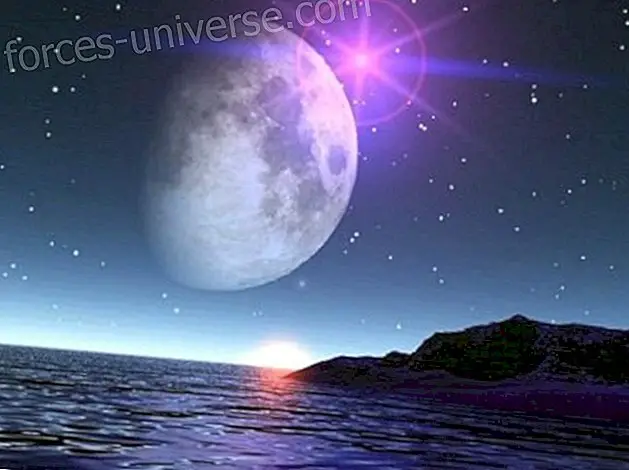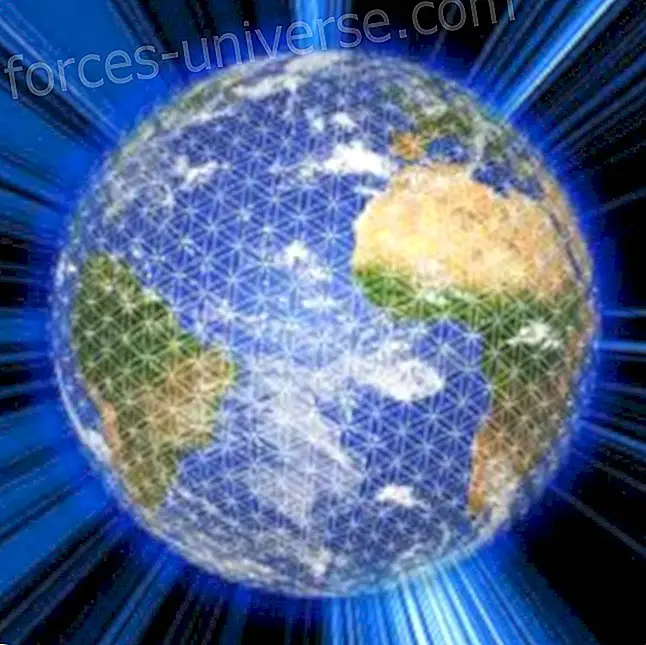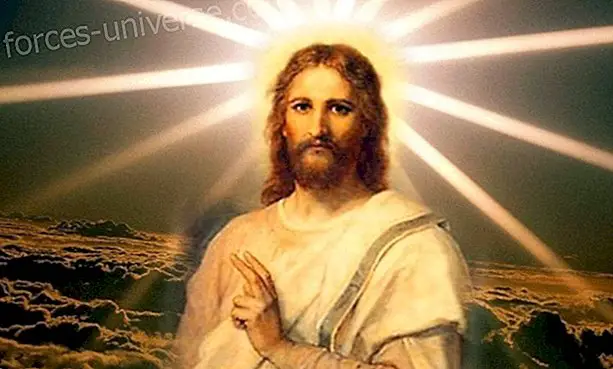We have to believe Steiner when he says that the spiritual research he carries out is based on the direct "reading" of what is known as the Akasha Chronicle, that hidden "text" in which everything that has happened in the history of the universe, a whole energetic world that is accessed by freeing itself from space and time, in order to perceive what happened in the past in its “eternal character” as if it were happening today. Steiner tells us that it is only after his hidden research work when he goes to check the information obtained with the corresponding texts, in this case with the Holy Scriptures, especially with the accounts of the four synoptic gospels. According to Steiner himself, the mission that was imposed on him by the spiritual worlds was to show men how to reach spiritual knowledge in a "conscious" way, so that they would not fall into the prevailing materialism. For this, as a modern initiate, he tried to transmit his own research in the spiritual world for the spiritual development of the human being. The role of Religions
Each of the different religions, including the Christian one, had a role to fulfill in a given historical era. At present, they have all been institutionalized, founding churches and establishing ways to worship. According to Steiner, in the distant future man will once again acquire clairvoyant knowledge and can perceive spiritual beings again, but already consciously, with which he will not need established religions. All religious sentiment will be directly addressed to spiritual beings, without intermediation, and knowledge will have replaced faith. With regard to Christianity Steiner makes it clear that it will remain as the fundamental mission of humanity, throughout its terrestrial evolution, not only to maintain, but to increase its relationship with the Christ, a spiritual being that will remain forever united to man. All the time that man has left to remain on earth will have to be spent transforming himself through the Christic impulse. The freedom of man and the opposing forces of the Divine Plan
Lucifer (bearer of light) and the forces he represents, is the lord of the illusory, appeals to human pride and ambition and wants to push man back to his cosmic childhood so that he does not reach his goal of freedom, making him believe that it is the same to the gods, connoisseur of good and evil. Ahriman (and the forces he directs) is the being who tells man that he is only a human being, with nothing divine, that only matter exists, that as a man he can conquer the world and put it at his service through scientific and technological development, prompting love for power and possessions. The work of the ahrimanic spirits, endowed with a superhuman cunning and power, is to enter deeply into the astral body of man making him forget his divine origin. They want man to be permanently trapped in matter, with a powerful but spiritless technology. During the "midpoint" of his earthly evolution man completed his descent from the spiritual worlds, fully incarnating himself on earth. Before the opposing forces of the Divine Plan could completely take over the human soul, the divine worlds gave man the opportunity to reach his spiritual freedom and thus direct his own evolution. And this could only be done by the Christ himself, becoming a man and dying as such on the cross, later returning to the spiritual worlds after his resurrection and ascension, in a mysterious process known as the `` Mystery of the G lgota . Man needed the divine help he received from Christ to be able to combat those powerful forces. Who was the Christ really?
In a very remote past, the Christ already knew that it would be necessary for him to enter a human body in order to control the influence of the opposing forces of the Divine Plan, and to propel man by developing his own Self. Already the ancient clairvoyant indians, known as the sacred Rishis, knew of the existence of the being of Christ in the Sun, as well as the prophet Zarathushtra in the second post-Atlantean stage, who knew him as Ahura Mazdao and who lived in the Sun. From his dwelling in the spiritual sphere of the Sun, Christ was already preparing and gradually approaching the earth. Steiner states that the mission of the Hebrew people had been to prepare, for 42 generations (from Abraham to Jesus) a human being capable of receiving in himself the tremendous strength of that divine being who it would come: the spirit of the Christ. That divine being habituated in the three bodily envelopes of that highly developed human being, full of wisdom and love, known as Jesus of Nazareth, who lived as the Self of himself for three years, from his incarnation in baptism for John on the Jordan River and until his death on the cross. The death and resurrection of the Christ According to Steiner, the Mystery of Golgotha (the death and resurrection of Christ) was a work of the divine worlds executed on the human stage and can never be fully understood by men. We should be able to understand, for example. that the earth itself was transformed, becoming shining to the spiritual vision at the same moment in which the blood of Christ was shed on it. Since then the Christ has been acting on the spiritual worlds and on the earth itself, and can be accepted within man's own inner being, since he is active as his higher Self, and the higher Self of humanity is the Christ himself. For Steiner, the advent of Christ is the greatest possible event that has happened to mankind since with him the possibility of his future evolution was opened to man, as a morally free being capable of fulfilling his divine destiny assuming full Responsibility for their actions. The higher self, or "being in itself" of man as a divine nature, could be incarnated "within" it thanks to the incarnation, death and resurrection of the highest being who is interested in man, and who was called the Christ . The Christic Impulse We have to understand that, through the Christic impulse, the human being received the possibility of “ascending” again to the spiritual worlds with his newly acquired earthly consciousness, but adding to it the consciousness of the spiritual worlds. It is difficult to understand the transcendence and meaning of the action of Christ for the evolution of humanity, as the work of an elevated being who became man and sacrificed himself dying as such and then resurrected, thus joining human destiny for all eternity .
The Christic action took place on the human stage for all men. Being a Christian, then, means accepting Christ as our highest being, and living accordingly, in a totally free act in which it is not necessary to be part of any organized Christian church. The soul must learn to be free, and this freedom has been made possible by Christic action. Christ can only act through the ego of man and help him fight the forces of evil settled in his world of desires and emotions, so that he recognizes and resists the many temptations that come before him. With the resurrection of Christ, man was given the possibility of what the gods had projected for him: to become a truly free being. Since then, as S. Pablo says, the Christ can live within him, but without depriving him of his freedom. It is the task of man to realize this fact and ask for his help in the face of evil forces, which interfere with that freedom. Who was Jesus of Nazareth? There is a great mystery surrounding the figure of Jesus of Nazareth. The stories of the Gospels of Matthew and Luke differ greatly in the story of the birth and childhood of Jesus. According to Steiner, there were actually two Jesus children, each described by an evangelist, but of course, only one Christ. The child described in the Gospel of Matthew, a descendant of the kings of Judea, in a previous incarnation had been the great prophet of ancient Persia known as Zarathustra. He had reincarnated many times and was a highly initiated human being, and therefore possessed extraordinary natural gifts, especially endowed with great wisdom.
The existence of two children explains, among other things, that the one described by Luke, when his parents found him on the third day of being lost, was discussing with the doctors in the Temple and asking them questions, considering the change in a child miraculous considered late. According to Steiner, what had happened is that a mysterious personality change had taken place, whereby the I of the Jesus who had previously been Zarathustra, had abandoned the three body wraps in which he had previously lived, moving to occupy those of Jesus Nathan's descendant, which explains the boy's sudden wisdom. The presence of that I full of wisdom, with the incorporation of the shells full of pure love of the natural Jesus, produced a human being so advanced and full of love-wisdom that he was able, at thirty, to donate his fully developed wraps to Christ in the act of baptism by John in the Jordan River, and with whom he would have to live for three years until he abandoned them at the crucifixion. The mission of the Christ begins then, following Steiner, with the possession of the most perfect body that had ever existed on earth. However, this body was consumed in three years by the tremendous forces that lived in it, until it could no longer contain the I Christ. We have already seen that what Christ did after the Mystery of Golgotha, was to take upon himself the consequences of human acts, insofar as they affect the earth and the universe, thereby making possible the future evolution of the earth. Rudolf Steiner's main lectures on the topic of Christianity are: Comments to the Gospels: that of St. John in Kassel, 1909, (Ed. R. Steiner Madrid 1988), idem in Hamburg, 1908 (ed. Kier 1981); that of S.Lucas in Basel, 1909 (ed. Kier 1979); to that of S.Mateo in Berlin, 1909 and Bern, 1910 (ed.Kier 1980); to that of St. Mark in Berlin and Basel, 1910, 1911, 1912 (ed. Kier 1980). From Jesus to Christ, Karlsrushe 1911 (Anthroposophical Ed, Mexico 1976) Christ and the human soul, Norrkoping 1914 (Anthroposophical Ed, Mexico 1983) _ Christ and the spiritual world, Leipzig, 1913 On the Christ impulse and the development of the consciousness of self, Berlin 1909 and 1910 The spiritual guide of man and humanity, Copenhagen 1911 The fifth gospel, Cologne 1913, (ed. Kier 1982). Andrés Piñán - Seen in revistabiosofia.com |

 There are many conferences in which Steiner, from 1908 until shortly before his death in 1925 addressed the issue of criticism, and in particular regarding the figure of Jesus of Nazareth and the fundamental role played by Christ in human evolution, very extensive and complex subject, and therefore very difficult to summarize. However, sinning in excess of simplification, we can draw some conclusions about his vision of the subject, which can only be considered as introductory to it.
There are many conferences in which Steiner, from 1908 until shortly before his death in 1925 addressed the issue of criticism, and in particular regarding the figure of Jesus of Nazareth and the fundamental role played by Christ in human evolution, very extensive and complex subject, and therefore very difficult to summarize. However, sinning in excess of simplification, we can draw some conclusions about his vision of the subject, which can only be considered as introductory to it. Already in 1908 Steiner considered that the role of Religion was to reconnect man with the supersensitive world, a connection that had already existed in Atlantean times, in which men "knew" the spiritual by clairvoyant direct perception. When this direct perception was progressively lost, a loss necessary for the development of intellectual capacity, the connection with the higher worlds had to be rediscovered by man himself. In this way the revealed religions arise, facilitated by initiates who still possessed the previous clairvoyant knowledge and that the rest of the men had to accept through faith.
Already in 1908 Steiner considered that the role of Religion was to reconnect man with the supersensitive world, a connection that had already existed in Atlantean times, in which men "knew" the spiritual by clairvoyant direct perception. When this direct perception was progressively lost, a loss necessary for the development of intellectual capacity, the connection with the higher worlds had to be rediscovered by man himself. In this way the revealed religions arise, facilitated by initiates who still possessed the previous clairvoyant knowledge and that the rest of the men had to accept through faith. At the central point of terrestrial evolution, man was at the lowest level of his descent into matter, at the mercy of the forces opposed to the Divine Will "personified" in evil beings or spirits, in two categories clearly identified by Steiner, and known as luciferic and ahrimanic beings. Freedom implies the possibility of disobeying the Divine Will. To make possible the "disobedience" of man (and therefore to reach his freedom) these beings were given, highly elevated, the possibility of rebelling (sacrificing and temporarily renouncing their own evolution) so that they could directly influence the man, especially about his world of feelings and will.
At the central point of terrestrial evolution, man was at the lowest level of his descent into matter, at the mercy of the forces opposed to the Divine Will "personified" in evil beings or spirits, in two categories clearly identified by Steiner, and known as luciferic and ahrimanic beings. Freedom implies the possibility of disobeying the Divine Will. To make possible the "disobedience" of man (and therefore to reach his freedom) these beings were given, highly elevated, the possibility of rebelling (sacrificing and temporarily renouncing their own evolution) so that they could directly influence the man, especially about his world of feelings and will. As Steiner explains, what is stated in the Gospels is a minimal part of what we could know about that spiritual being so high, that he became directly and forever involved in evolution. of man and earth. The image of Jesus is replaced by that of a God who became man to execute a transcendent action, and who continues to exercise, not only for man, but for the whole earth. . In Steiner's esoteric cosmic vision, reference is made to the different incorporations prior to the current one of the earth (see his Hidden Science ) and that He called it as ancient Saturn, ancient Sun and ancient Moon. It tells us that in the planetary stage of the ancient Sun, the Christ was the planetary ser of the Sun, endowed with the greatest of the provisions of self-sacrifice and devotion, ready to fulfill any task Assign, in contrast to Lucifer, fully filled with pride and that he was then the planetarium of Venus. In the period of incorporation of the earth, Christ was the highest of the solar spirits and set limits to the luciferic influence on the human astral body.
As Steiner explains, what is stated in the Gospels is a minimal part of what we could know about that spiritual being so high, that he became directly and forever involved in evolution. of man and earth. The image of Jesus is replaced by that of a God who became man to execute a transcendent action, and who continues to exercise, not only for man, but for the whole earth. . In Steiner's esoteric cosmic vision, reference is made to the different incorporations prior to the current one of the earth (see his Hidden Science ) and that He called it as ancient Saturn, ancient Sun and ancient Moon. It tells us that in the planetary stage of the ancient Sun, the Christ was the planetary ser of the Sun, endowed with the greatest of the provisions of self-sacrifice and devotion, ready to fulfill any task Assign, in contrast to Lucifer, fully filled with pride and that he was then the planetarium of Venus. In the period of incorporation of the earth, Christ was the highest of the solar spirits and set limits to the luciferic influence on the human astral body. In the future, Steiner tells us, the way in which man can progress spiritually is by allowing his being to be filled with Christ, in a free and conscious act of recognition and cooperation with that divine being that has already begun to manifest in the world. ethereal close to man, and it is known as the Second Advent.
In the future, Steiner tells us, the way in which man can progress spiritually is by allowing his being to be filled with Christ, in a free and conscious act of recognition and cooperation with that divine being that has already begun to manifest in the world. ethereal close to man, and it is known as the Second Advent. The Jesus described in the Gospel of Luke, a descendant of Nathan, son of David, tells us Steiner that he had never previously incarnated as a human being, but that his soul and spirit had been preserved in what he calls the "maternal lodge" of The humanity; He had no karma, and therefore no influence from the Luciferic or Arithmanic forces. He was a pure being, which today we would consider delayed, without the slightest earthly wisdom but full of love, mysteriously endowed in his astral body with the forces of compassion, which from the spiritual world had incorporated the spirit of the Buddha.
The Jesus described in the Gospel of Luke, a descendant of Nathan, son of David, tells us Steiner that he had never previously incarnated as a human being, but that his soul and spirit had been preserved in what he calls the "maternal lodge" of The humanity; He had no karma, and therefore no influence from the Luciferic or Arithmanic forces. He was a pure being, which today we would consider delayed, without the slightest earthly wisdom but full of love, mysteriously endowed in his astral body with the forces of compassion, which from the spiritual world had incorporated the spirit of the Buddha.




